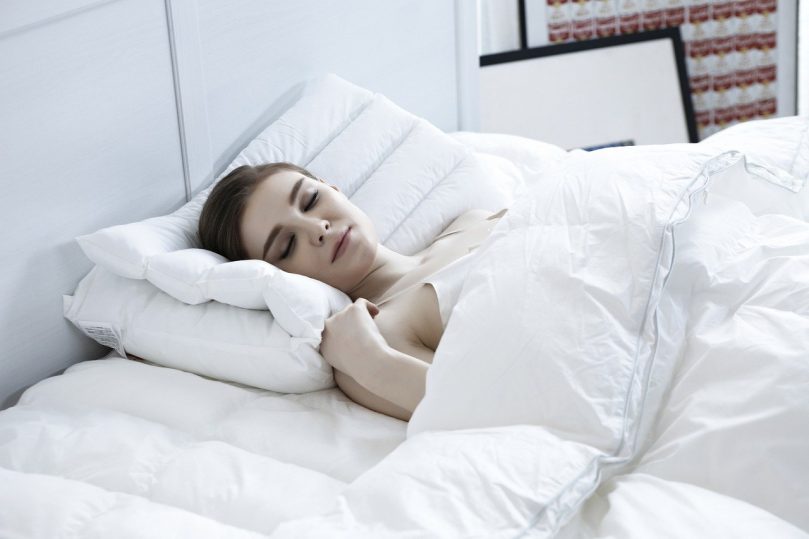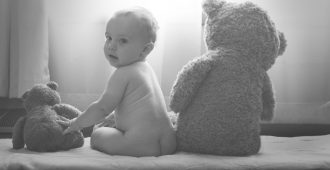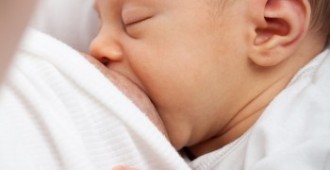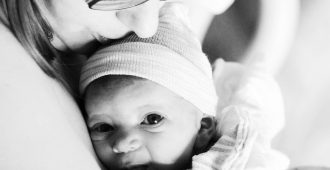Did you know that it is possible to get enough sleep and yet breastfeed during the night sleep hours?! YEP! We are here to tell you that it is! It’s every parents’ dreaded fear right?! Baby feeds well but is constantly waking up and you can’t get back to sleep because well baby won’t go back to sleep! Or, worse, the baby gets back to sleep after you fed her but you are so stimulated with getting up that now you can’t get back to sleep and yet you are e-x-h-a-u-s-t-e-d!
Research shows that “breastsleeping” is one of the best things you can do to catch a few more Zs. So what is “breastsleeping”? Breastsleeping is breastfeeding while bedsharing (sometimes referred to co-sleeping, although co-sleeping has also been used to refer to sharing the same room). Researchers James McKenna and Lee Gettler have studied mother-infant dyads sleeping in a laboratory setting and coined the term to describe how the pairs sleep together. Essentially, breastfed and bedsharing babies stir more frequently, in turn breastfeeding more frequently and for longer duration each session.
 In the mid 90s, the “Back to Sleep” campaign started to reduce the chances of SIDS and educate parents on safe sleeping arrangements. The interesting thing that you won’t often hear a health professionals share is that breastfeeding has a protective effect against SIDS because breastfed babies wake more frequently to feed and sleep lighter than formula fed babies. This is due to the makeup of breastmilk being higher in carbohydrates and digested faster.
In the mid 90s, the “Back to Sleep” campaign started to reduce the chances of SIDS and educate parents on safe sleeping arrangements. The interesting thing that you won’t often hear a health professionals share is that breastfeeding has a protective effect against SIDS because breastfed babies wake more frequently to feed and sleep lighter than formula fed babies. This is due to the makeup of breastmilk being higher in carbohydrates and digested faster.
Breastsleeping has an even higher protective effective because of how it works. When mother and baby bedshare and breastfeed throughout the night, an “integrated system” develops between mother and baby for physiological and behavioral (attachment) reasons. Baby is in fact “stirred” or woken by mothers movements in bed, mother is so interconnected to her child that she makes movements to nurse her child that she often does not even remember. Baby waking more frequently and sleeping in a lighter sleep state actually protects the child from SIDS or SUID.
Let’s return to where we began this article…how to get more sleep!  The beauty of this arrangement is that mom most frequently, either barely wakens or wakens for such a short time she does not even remember it in the morning. It is the best way to ensure that both you and your little one get the MOST sleep (during a very often sleep deprived stage of life) and your breastfeeding relationship is enhanced.
The beauty of this arrangement is that mom most frequently, either barely wakens or wakens for such a short time she does not even remember it in the morning. It is the best way to ensure that both you and your little one get the MOST sleep (during a very often sleep deprived stage of life) and your breastfeeding relationship is enhanced.
Not only does it increase milk supply to nurse through the night, research has shown that many babies get as much as 50% of their daily milk needs when nursing in the night. In addition, McKenna’s research shows that mothers who breastsleep breastfeed for longer (especially past the 6 month mark that is important for developing babies who are immunologically immature) durations. As if that were not enough to convince you, breastsleeping also increases attachment between mother and baby.
If you already do, or are considering doing so, you are not alone in bedsharing. Research from the early 2000s shows that 50-75% of new families in the US and UK bring their child to bed with them for at least a part of the night. In addition, breastfeeding mothers are more than 2x as likely to sleep with their child in the first month compared to mothers who bottle-feed.
So how do you bedshare safely? We recommend you check out the Safe Sleep 7 guidelines. Here is a recap:
- No smoking (inside or outside home)
- Sober parents (not being under the influence of alcohol, drugs, or medications that can sedate you)
- Breastfeeding (day and night)
- You have a healthy, “full term” (aka., 38 wks+ gestation) baby
- Baby sleeps on their back except when nursing
- Baby is not swaddled or overheated
- You have a safe sleeping surface (comfortably firm, no gaps, no cords, and covers are away from baby’s face)

















